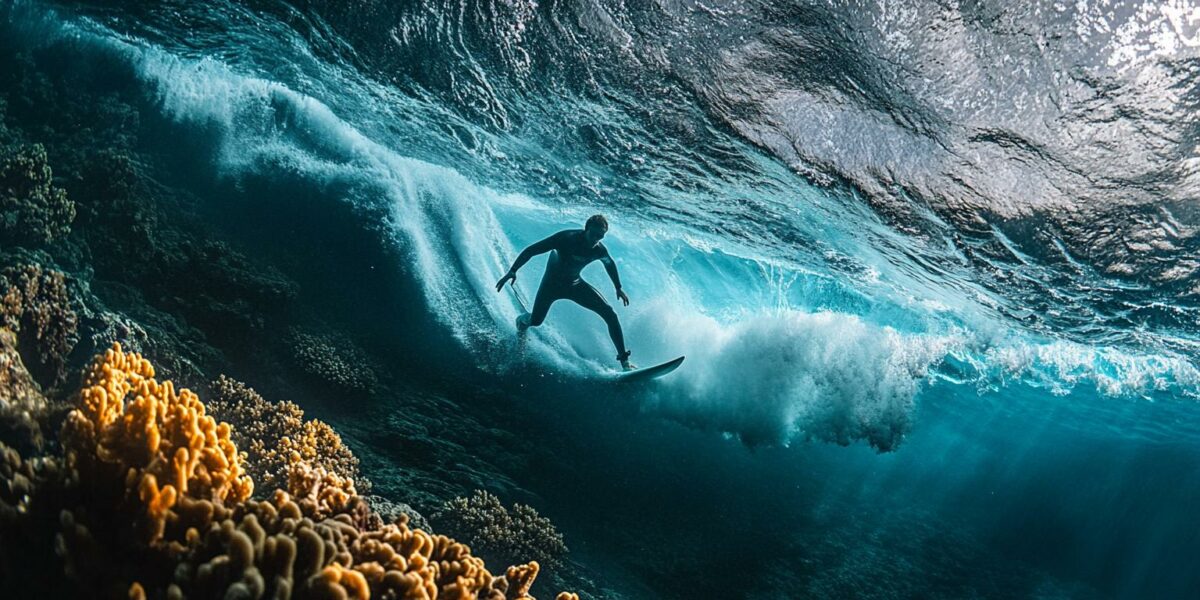Surfing: More Than Just a Sport
A groundbreaking study from Oregon State University has unveiled an unexpected link between surfing and climate change mitigation. The research highlights how conservation efforts around surf breaks can protect vital carbon stocks. This revelation opens up new avenues for environmental strategies that harness the power of nature’s elements.
Jacob Bukoski, an Assistant Professor at OSU, emphasized the importance of this finding. “Our results suggest a significant opportunity for surf conservation to strengthen protection of climate-critical carbon stocks,” he stated. This insight underscores the potential for integrating surf culture into broader environmental policies.
Surprising as it may seem, the areas surrounding popular surf breaks are rich in “irrecoverable carbon”. Defined as carbon that, once lost, cannot be replaced within 30 years, these stocks play a crucial role in regulating our planet’s climate. Protecting these regions could thus have a significant impact on global carbon levels.
The study identified that approximately 88 million metric tons of irrecoverable carbon exist around 3,600 surf breaks worldwide. This startling figure highlights the critical need for targeted conservation efforts to preserve these natural resources and combat climate change effectively.
Beyond the Waves: The Ecological Importance of Surf Breaks
Surf breaks are more than just spots for catching waves; they are biodiverse ecosystems. These areas, often formed by natural obstructions like coral reefs, support a wide variety of marine life. The reefs not only create waves but also provide habitats for numerous species.
Bukoski explained, “A coral reef is also an extremely biodiverse portion of the ocean. There’s a very rich ecosystem there.” This biodiversity is essential for maintaining healthy oceanic environments, and protecting these areas can have far-reaching ecological benefits.
Conservation efforts around surf breaks can yield multiple advantages:
- Preserving marine biodiversity
- Mitigating climate change through carbon storage
- Supporting local communities dependent on these ecosystems
By focusing on these regions, we can address several environmental issues simultaneously.
Moreover, the destruction of these areas releases stored carbon into the atmosphere, exacerbating climate change. Hence, safeguarding surf breaks becomes not just an ecological necessity, but also a climate imperative.
Global Impact and Future Directions
This study’s findings urge a reevaluation of how we perceive and protect surf breaks. The integration of surf conservation into climate policies could drive substantial change. By recognizing the climate-critical role these areas play, we can advocate for more robust environmental protections.
International agreements and policies often target milestones like 2050 for climate goals. The concept of irrecoverable carbon aligns perfectly with these timelines, emphasizing the urgency of immediate action. Protecting these carbon stocks could be pivotal in meeting global climate objectives.
“At the end of the day, we should be shredding waves, not ecosystem carbon,” Bukoski asserted. This sentiment captures the dual benefit of enjoying natural resources while preserving them for future generations.
The publication of this study in Conservation Science & Practice marks a significant step forward. As awareness grows, so too does the potential for innovative solutions that blend sport, science, and sustainability in a harmonious effort to combat climate change.
Connecting Communities and Conservation
The relationship between local communities and surf breaks is intrinsic. Many coastal communities rely on these areas for their livelihoods, from tourism to fishing. Hence, protecting surf breaks has both environmental and socioeconomic benefits.
Effective conservation strategies must involve community participation. By engaging local populations in these efforts, we ensure sustainable practices that benefit both people and the planet. This collaborative approach fosters a sense of stewardship and shared responsibility.
Moreover, the study highlights the need for policy changes that recognize the importance of surf conservation. Governments and organizations must work together to develop frameworks that protect these crucial ecosystems while promoting sustainable development.
In conclusion, the Oregon State University study not only unveils a fascinating link between surfing and climate change but also calls for a holistic approach to conservation. By protecting surf breaks, we safeguard vital carbon stocks, support biodiversity, and empower communities, contributing to a healthier planet for all.



silas
Great work OSU! This really shows the interconnectedness of our planet. Keep it up!
jasperoasis
Is this for real? Surfing to save the planet sounds like a plot for a sci-fi movie! 😂
Rosie
I’m curious about how local communities can get involved in these conservation efforts. Any ideas?
Thomas
Wow, 88 million metric tons of irrecoverable carbon! That’s insane. Thanks for sharing this important info.
JaneEnigma
How exactly does surf conservation protect carbon stocks? Can someone explain in simpler terms?
ZoeCelestia6
This is incredible! Does this mean that surfing could actually help fight climate change? 🌊